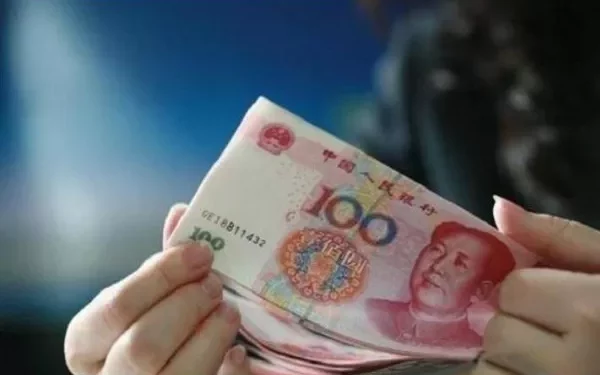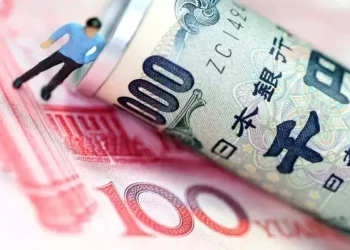The foreign exchange (forex) market is the largest and most liquid financial market globally, where currencies are traded against each other. One of the most common transactions in the forex market involves the exchange of the Chinese Yuan (RMB) and the Singapore Dollar (SGD). As both China and Singapore play pivotal roles in the global economy, understanding how to convert RMB to SGD, along with the influencing factors and trends, is essential for traders, investors, and individuals engaged in international finance.
In this article, we will explore the process of converting 1500 RMB to SGD, focusing on the exchange rate dynamics, factors influencing the value of RMB and SGD, trading strategies, and practical advice for both seasoned forex traders and individuals looking to exchange their currency.
1. Understanding the Basics of RMB and SGD
Before diving into the specifics of currency conversion, it’s essential to understand the two currencies involved in the exchange – the Chinese Yuan (RMB) and the Singapore Dollar (SGD).
The Chinese Yuan (RMB)
The Chinese Yuan, or Renminbi (RMB), is the official currency of the People’s Republic of China. It is subdivided into 10 jiao or 100 fen. As one of the world’s most traded currencies, the value of the RMB is influenced by numerous economic and political factors, including China’s economic policies, trade relationships, and central bank interventions.
China’s economy is the second largest in the world, with a robust manufacturing sector and a growing digital economy. The strength of the Yuan is often seen as a reflection of China’s economic performance, and the currency is also affected by China’s trade balance, inflation rates, and interest rates set by the People’s Bank of China (PBOC).
The Singapore Dollar (SGD)
The Singapore Dollar (SGD) is the official currency of Singapore. It is subdivided into 100 cents and is issued by the Monetary Authority of Singapore (MAS). The SGD is known for its stability, and Singapore has a reputation as a global financial hub with a highly developed economy.
Several factors influence the value of the SGD, including Singapore’s export-driven economy, its monetary policies, and the performance of key trading partners. Additionally, Singapore has a relatively open financial system, which means that global market trends, such as changes in oil prices or interest rates in other major economies, can also impact the value of the SGD.
2. The Conversion Process: 1500 RMB to SGD
Converting RMB to SGD, especially in the context of 1500 RMB, requires understanding the exchange rate between the two currencies. The exchange rate is the price of one currency in terms of another. For example, if the exchange rate for RMB to SGD is 0.19, then 1 RMB will be worth 0.19 SGD.
However, exchange rates fluctuate continuously due to a range of economic and market factors. Traders and businesses must track these fluctuations to make informed decisions on when to exchange currencies at the best rate.
Example Conversion Calculation
Let’s say the exchange rate for RMB to SGD is 0.19. To convert 1500 RMB into SGD, the calculation would be as follows:
1500 RMB × 0.19 (Exchange Rate) = 285 SGD
This means that 1500 RMB would be equivalent to 285 SGD, assuming the exchange rate is 0.19. However, it’s important to note that the exchange rate can fluctuate, so the exact amount of SGD you would receive can vary depending on the prevailing market rate at the time of conversion.
3. Factors Influencing the RMB to SGD Exchange Rate
Several key factors impact the value of the RMB relative to the SGD. Understanding these factors is crucial for traders and individuals who regularly deal with currency conversion.
Economic Indicators
Economic indicators, such as GDP growth, inflation, unemployment rates, and trade balances, can significantly affect currency values. For instance, a strong economic performance in China might lead to an appreciation of the RMB, while a robust economy in Singapore could strengthen the SGD.
Interest Rates
Interest rates set by central banks play a vital role in currency value. When interest rates rise in China or Singapore, it can make the currency more attractive to investors, thus increasing demand and strengthening the currency. Conversely, lower interest rates can have the opposite effect.
Trade and Investment Flows
The level of trade between China and Singapore, as well as foreign direct investment (FDI) flows, can influence the exchange rate. A higher volume of trade or investment from one country to the other may lead to increased demand for that country’s currency, affecting the exchange rate.
Central Bank Policies
Both the People’s Bank of China (PBOC) and the Monetary Authority of Singapore (MAS) influence currency values through their monetary policies. Central banks can intervene in the forex market to stabilize or influence the value of their currency. For example, the PBOC may devalue the RMB to boost exports, while MAS may adjust its policies to ensure the SGD remains competitive.
Global Market Conditions
Since both the RMB and SGD are affected by global market conditions, external factors such as geopolitical events, commodity prices, or changes in the global financial landscape can also impact the exchange rate. For example, fluctuations in the price of oil, which is a major export of Singapore, could influence the value of the SGD.
4. Practical Considerations for Currency Conversion
For those looking to convert 1500 RMB to SGD, there are several practical considerations to keep in mind to ensure a smooth and cost-effective process.
Currency Exchange Services
Currency exchange services are available at various points, including banks, currency exchange offices, online platforms, and at the airport. It is essential to compare exchange rates and fees from different providers to ensure you get the best deal. Banks and official financial institutions typically offer competitive rates, but currency exchange offices may charge higher fees or offer slightly less favorable rates.
Forex Trading Platforms
For forex traders, there are numerous online platforms where you can trade RMB and SGD pairs. These platforms allow traders to speculate on the future direction of the exchange rate and potentially profit from currency fluctuations. However, trading on margin involves higher risks, and traders should have a solid understanding of the forex market before engaging in active trading.
Timing and Exchange Rate Trends
One of the key elements in currency conversion is the timing of the exchange. Exchange rates fluctuate daily based on market conditions, so it is important to monitor trends and make the conversion when the rate is favorable. In some cases, traders may use technical analysis or fundamental analysis to predict future movements in the currency market.
Conversion Fees and Spreads
When converting RMB to SGD, be aware of conversion fees and the spread between the buying and selling rates. Financial institutions and currency exchange providers usually charge a spread, which is the difference between the buy and sell prices. This spread can vary depending on the provider and the size of the transaction.
5. The Impact of Currency Conversion on Businesses
For businesses that regularly deal with currency conversion, such as importers and exporters, the exchange rate between the RMB and SGD can have a significant impact on their profitability. A fluctuation in the value of the RMB relative to the SGD can affect the cost of goods, profit margins, and overall financial planning.
For example, an exporter in Singapore who sells products to China will benefit from a strong SGD when converting revenue from RMB back to SGD. On the other hand, a business importing goods from China may face higher costs if the RMB strengthens against the SGD.
6. Risk Management in Currency Exchange
Currency exchange can be volatile, and businesses or individuals exchanging RMB for SGD should consider risk management strategies to mitigate potential losses. One common strategy is to use hedging instruments, such as forward contracts or options, to lock in exchange rates for future transactions. This can help protect against unfavorable currency movements and provide more predictability in cash flow.
Additionally, businesses may choose to diversify their currency exposure to reduce the risk of exchange rate fluctuations affecting their bottom line.
Conclusion
Converting 1500 RMB to SGD involves a range of factors, from understanding the basics of both currencies to considering the timing and fees associated with the exchange. By keeping an eye on economic indicators, interest rates, and market trends, individuals and businesses can make informed decisions and take advantage of favorable exchange rates. Whether for personal transactions, forex trading, or international business, understanding currency conversion is essential in the globalized financial market.
In a dynamic market like forex, it’s crucial to stay updated on the latest developments and trends, which can influence the value of the RMB and SGD. By leveraging knowledge of these factors, forex traders and individuals alike can navigate the world of currency exchange effectively and efficiently.
Related Topics:
























